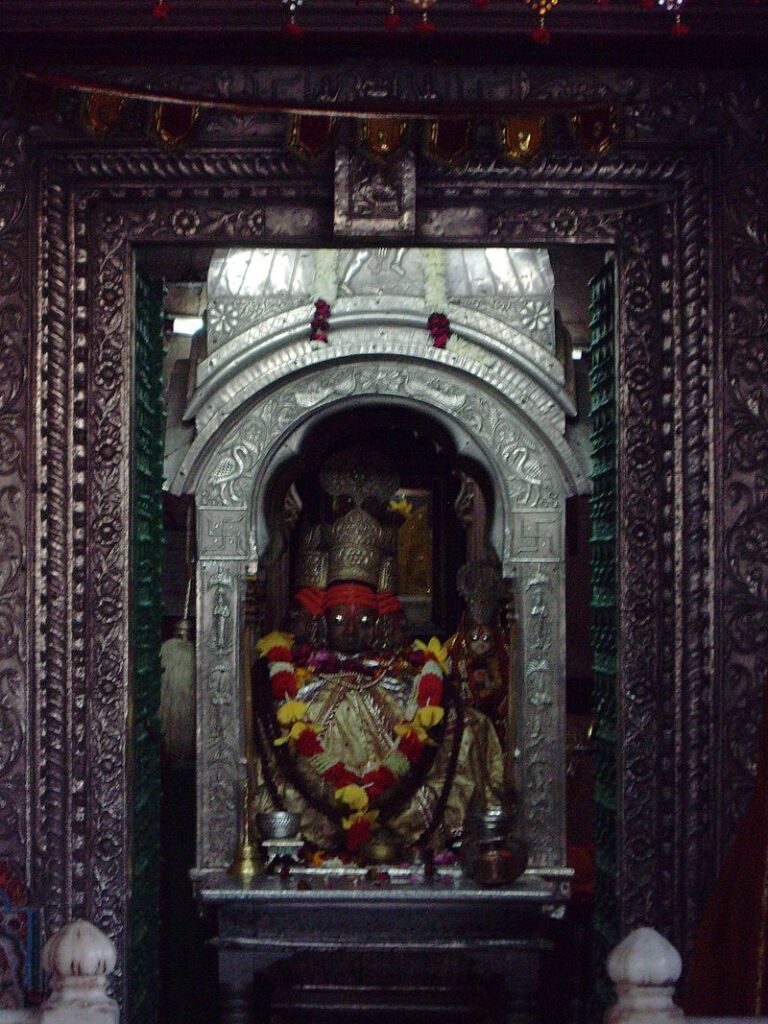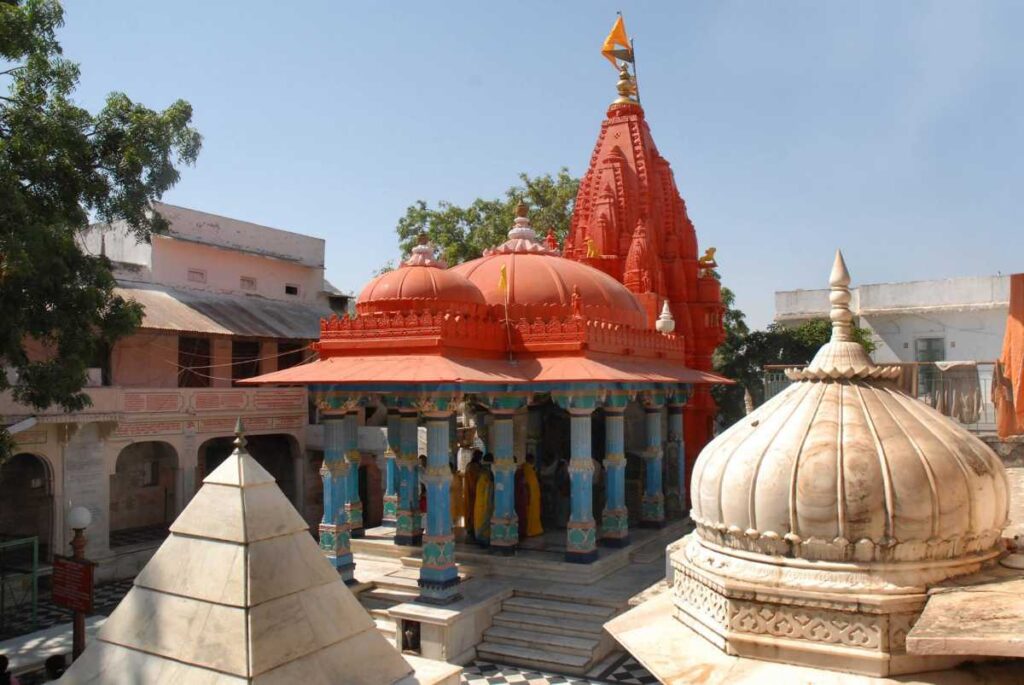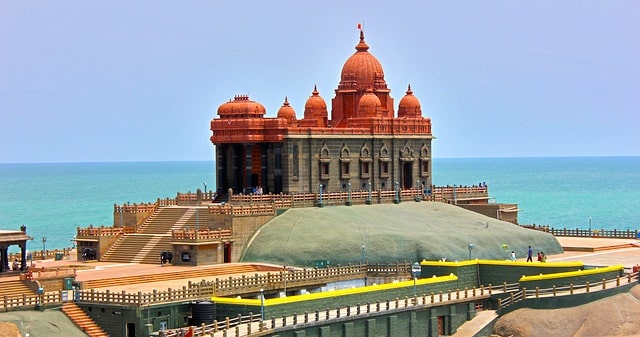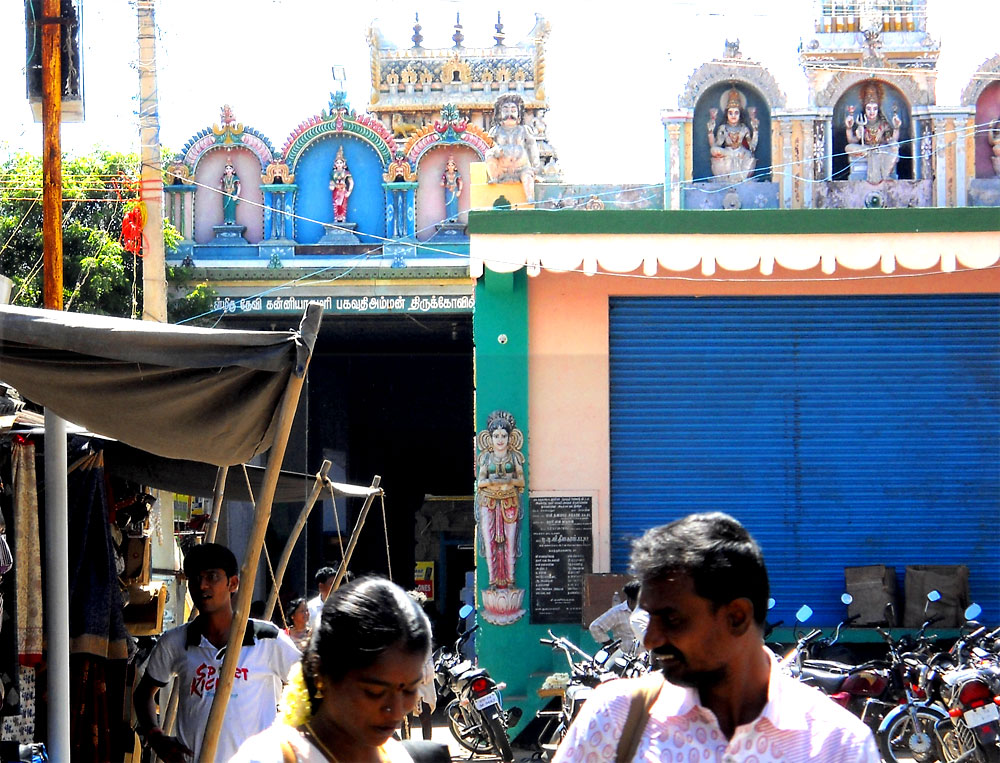Hey, you may heard it before that there are temples in India where women are not allowed.
But you will be surprised to know that there are such unique temples in our country where the customs and traditions do not allow men to enter into the temple at all or during some special occasions.
In a male-dominated society, doesn’t that sound fascinating to hear about the temples where men are not allowed?
Yes!
You can say “women only temples”. Only women can enter into the temple and perform all the rituals.
I have listed some temples name and reason behind the restriction.
So let’s see one by one..
1. Attukal Bhagavathy Temple, Kerela

Attukal Bhagavathy Temple 
Attukal Pongala Festival’s Decoration 
Women gathered for Attukal Pongala Festival 
Rituals of Attukal Pongala Festival
The Attukal Bhagavathy Temple is a Hindu temple situated at Attukal in Kerela, India. The main deity of this temple is Goddess Bhadrakali (Kannaki). This temple is renowned for a festival called Attukal Pongala which is a 10 days festival that has made a Guinness Book of World Records for being the single largest gathering of women for a religious activity. In this temple men are not allowed to enter the temple premises till 10 days because of the Pongala festival, where women prepare a divine food made of rice in earthen pots and offer it to the Attukal Amma (Goddess of the Temple). This is the main festival of this temple which falls in the month of February – March every year. The 9th day i.e ”Pooram Day” of the festival is the major attraction. This temple is also known as the Sabarimala for women.
2. Lord Brahma Temple, Rajasthan

Idol of Lord Brahma Inside the Temple 
Pushkar Lake near Brahma Temple 
The Mandapam of Brahma Temple 
Front Gate of Brahma Temple 
Brahma Temple
The Jagatpita Brahma Mandir is a Hindu temple situated at Pushkar in Rajasthan, India. The main deity of this temple is Lord Brahma. This temple do not allow married men at all from entering the sanctum sanctorum(Garbh-Griha) to worship the deity. As per the puranas, Lord Brahma was supposed to perform yagna at Pushkar lake with his wife Savitri(Goddess Saraswati). But since Goddess Saraswati was late for the event, he married Goddess Gayatri and completed the ritual, due to which Goddess Saraswati cursed the temple saying that “no married man will be allowed to enter the inner sanctum; or else, trouble shall arise in his marital life”. This is the reason why men are not allowed to enter in this temple.
3. Devi Kanyakumari / Kumari Amman Temple, Tamil Nadu

Front View of Kanyakumari Temple 
Back view of Kanyakumari Temple 
Side View of Kanyakumari Temple 
Entry Gate of Kumari Amman Temple
The Devi Kanya-Kumari or The Bhagavathy Kumari Amman Temple is situated at Kanyakumari in Tamil Nadu, India. The main deity of this temple is Maa Bhagavathy in the form of an adolescent girl child. It is one of the 51 Shakti Peethas. In this temple sanyasi or bachelor men are allowed till the gate of the temple, while married men are not allowed at all. It is believed to be the place where Devi Parvati did Tapasya for Lord Shiva as her husband in the middle of the ocean. Her marriage with Lord Shiva was disturbed by Narada, so as to make her eligible for killing Banasura, who had to die in the hands of a virgin adolescent girl. According to the Puranas, the right shoulder and spine area of Sati’s corpse fell here creating the presence of Kundalini Shakti in the region. Sage Parashurama is said to have performed the consecration of the original temple.
4. Kamakhya Temple, Assam

Kamakhya Temple 
Garbha-Griha of Kamakhya 
Kamakhya Temple’s Ambubachi Mela Decoration 
Kamarupa (Carving at Kamakhya Temple)
The Kamakhya Temple is Situated on the Nilachal Hills in western part of Guwahati city in Assam, India. The main deity of this temple is dedicated to the ten Mahavidyas of Saktism, namely: Kali, Tara, Tripura Sundari, Bhuvaneshwari, Bhairavi, Chhinnamasta, Dhumavati, Bagalamukhi, Matangi and Kamalatmika. It is one of the oldest of the 51 Shakti Peethas. It is an important destination for Hindus and especially for Tantric worshipers. This temple is also known for its festival called Ambubachi Mela which attracts thousands of tantra devotees. During this time, the main door of the temple remains shut for four days. It is believed that the Goddess menstruates during those days. On this occasion, men are not allowed to enter the temple and only female priests or sanyasis are allowed to serve the temple during those days.
5. Mata Temple, Bihar

Mata Temple
The Durga Mata Temple is situated at Kharauna in Muzaffarpur, Bihar, India. It is a Shakti Sthal just like the Kamakhya Temple in Assam, this temple also prohibits men from entering the temple premises at a time when the Goddess is believed to be menstruating. Here, the rules are so strictly followed that even the regular male priest(Pujari) is not allowed to enter the temple premises, and it becomes ‘women only’.
Hope I covered all the information you are searching for and if anything is left out please let me know in comment section so that I can put it on my next article..

















